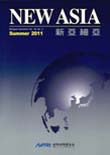학술논문
북한의 핵 미사일 위협에 대한 일본의 군사 외교적 대응
이용수 397
- 영문명
- Japan’s Response to Nuclear North Korea
- 발행기관
- 신아시아연구소(구 신아세아질서연구회)
- 저자명
- 미찌시타 나루시게(道下徳 成)(MICHISHITA Narushige)
- 간행물 정보
- 『신아세아』新亞細亞 第19卷 第4號, 7~26쪽, 전체 20쪽
- 주제분류
- 사회과학 > 정치외교학
- 파일형태
- 발행일자
- 2012.12.30
5,200원
구매일시로부터 72시간 이내에 다운로드 가능합니다.
이 학술논문 정보는 (주)교보문고와 각 발행기관 사이에 저작물 이용 계약이 체결된 것으로, 교보문고를 통해 제공되고 있습니다.

국문 초록
영문 초록
In response to nuclear-armed North Korea, Japan has taken extensive non-nuclear military measures in order to cope with the North Korean threat while being less active in using diplomacy.
Analysts estimate that North Korea had possessed 33 to 55 kilograms of plutonium enough for 6 to 13 nuclear devices. Two nuclear tests in 2006 and 2009 proved that North Korea had successfully produced nuclear devices. The only remaining missing link in determining whether North Korea’s nuclear weapons have become usable is in the issue of miniaturization. On this point, the U.S. Defense Intelligence Agency(DIA) assessed in 2009 that North Korea “may be able to successfully mate a nuclear warhead to a ballistic missile.”
Capable of covering almost the entire territory of Japan, the medium-range No Dong missile constitutes the most serious threat to the country. The No Dong has a range of 1,300 kilometers with a payload of 700 to 1,200 kilograms and circular error probable(CEP) of 2.5 kilometers. By 2003, North Korea had deployed some 175∼200 No Dong missiles. A more recent report stated that as many as 320 No Dong missiles had been deployed.
As a result, North Korea is already capable of attacking Japan with ballistic missiles. Conventional, chemical, or biological weapons can be used. Given the DIA’s estimate of North Korea’s ability to miniaturize the nuclear device, the assessment is that North Korea “may be able to” now use nuclear weapons against Japan.
There are three scenarios in which North Korea might actually use missiles against Japan. First, there is a military-diplomatic scenario in which North Korea would launch missiles as a part of its effort to coerce Japan into diplomatic submission. Second, there is a wartime deterrence scenario in which North Korea would use or threaten to attack Japan in order to deter the United States and Japan from assisting South Korea in case of war on the Korean peninsula. Finally, there is a scenario in which desperate North Korean leaders launch all-out
attacks against Japan.
Japan’s military response to the North Korean threat has three pillars: ballistic missile defense(BMD), civil defense, and extended nuclear deterrence provided by the United States. In 2003, the Japanese government made the decision to procure BMD systems. Based on this decision, deployment of BMD units in the Self-Defense Forces(SDF) began in 2007, and the deployment was completed in 2012. Two different systems are being introduced as key components of the Japanese BMD measures. One is the Standard Missile-3(SM-3) Block IA, an upper-tier, mid-course defense system deployed on Aegis destroyers. The other system is Patriot Advanced Capabilities-3(PAC-3), a ground-based, lower-tier, terminal-phase defense system. Of these two systems, the Aegis-based SM-3 is
more important than PAC-3 in the sense that the SM-3 has much wider area coverage. The total expenditure of procuring the entire system is approximately 1 trillion yen, or $12.2 billion.
Regarding civil defense measures, the Civil Protection Law was enacted in 2004. It stipulated how the national and local governments should implement evacuation and relief operations and take necessary measures in response to armed attacks. In 2005, the Cabinet Secretariat prepared a new warning siren designed specifically for civil defense purposes.
Japan has taken steps to maintain and possibly enhance the credibility of U.S. extended nuclear deterrence. The Nuclear Posture Review(NPR) published by the Department of Defense in April 2010, however, announced that the Tomahawk, nuclear-equipped, sea-launched cruise missile(TLAM-N) would be retired. Some Japanese government officials felt betrayed by this since the TLAM-N had long been hailed as the centerpiece of the U.S. extended nuclear deterrent provided to Japan.
목차
Ⅰ. 북한의 핵과 미사일 능력
Ⅱ. 일본에 대한 미사일 공격 시나리오
Ⅲ. 일본의 대응
Ⅳ. 맺는 말
[English Abstract]
키워드
해당간행물 수록 논문
참고문헌
교보eBook 첫 방문을 환영 합니다!

신규가입 혜택 지급이 완료 되었습니다.
바로 사용 가능한 교보e캐시 1,000원 (유효기간 7일)
지금 바로 교보eBook의 다양한 콘텐츠를 이용해 보세요!





